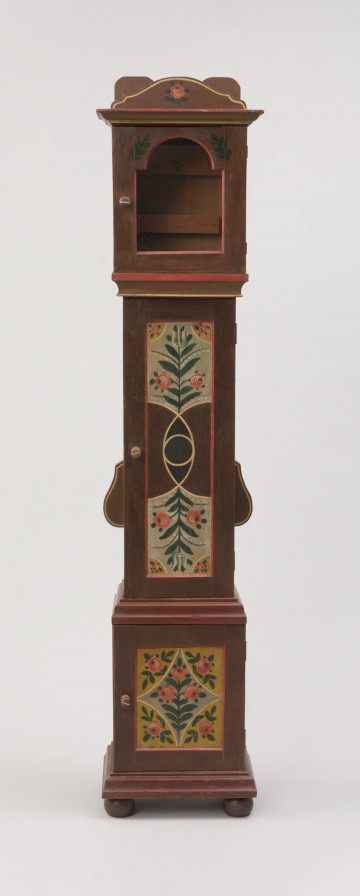
Mug
2. połowa XIX wieku
National Museum in Szczecin
Part of the collection: Pyrzycka folk culture
In folk costumes, a skirt was long or reached halfway up the calf, to the edge of the high, laced upper of the leather shoe. For villagers, buying footwear was a significant financial challenge. They often bought one pair only once for life. The Pyrzyce women living in a prosperous region, whose affluence was due to the fertile soils and long years of freedoms, followed by small taxes for the settlers who came to work on land reclamation, could mostly afford to spend a lot, however, in their dress they did not opt for leather shoes with uppers. They wore black, flat slippers without heels, and up to the height of a short, knee-length skirt, they wore woollen stockings, usually red. The stocking preserved in the collection of the National Museum in Szczecin is unique as it was made of navy-blue wool. It was knitted using a stocking knitting stitch. Like other parts of the Pyrzyce women's costume, the stocking is an item that can be decorated and embellished at will. The flat embroidery favoured by the Pyrzyce women is placed on the foot, around the ankle, and along the entire length of the calf, creating symmetrical two or even four decorative bands. These are mainly floral motifs with contrasting colours between the background and the embroidery. The stockings were supported from above by equally decorative garters before falling down. In the silhouette of a woman in the Pyrzyce folk costume, attention is drawn to her legs, on which the stockings and garters protruding from under the skirt create a very colourful, picturesque and unusual element in most folk costumes.
Iwona Karwowska
Author / creator
Dimensions
cały obiekt: height: 65 cm, width: 12 cm
Object type
folk costume
Creation time / dating
Creation / finding place
Identification number
Location / status

2. połowa XIX wieku
National Museum in Szczecin

2. połowa XVII wieku
National Museum in Szczecin

2. połowa XIX wieku
National Museum in Szczecin
DISCOVER this TOPIC
National Museum in Lublin
DISCOVER this PATH
Educational path